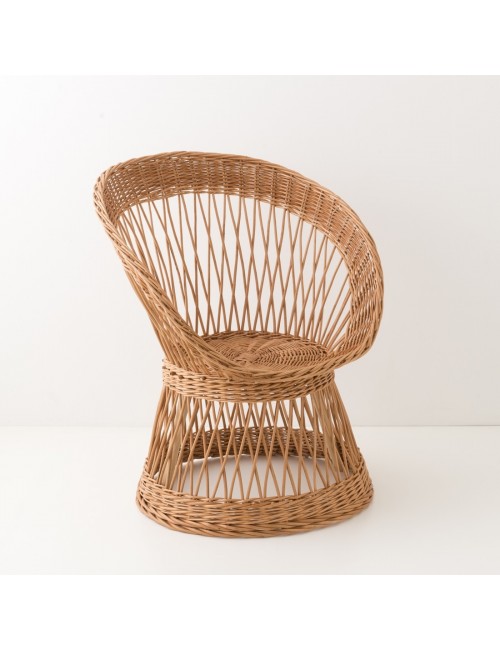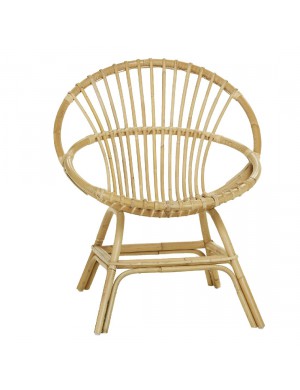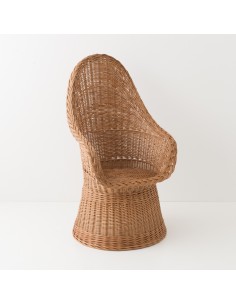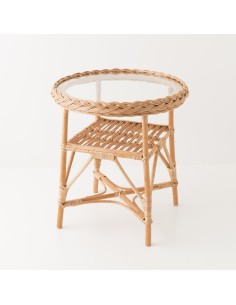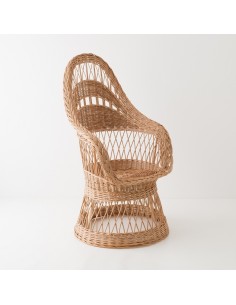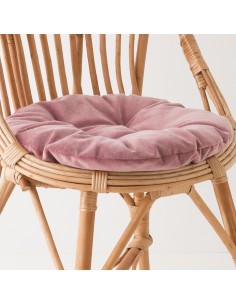The Franz willow armchair
The Franz willow armchair is constructed like a basket, virtually structureless, just hand-woven. The sturdiness of the willow and the diamond pattern of the wicker strands in the openwork design make it incredibly light and economical. As willow is a natural, local and renewable resource (the wicker spontaneously grows back each year after the winter harvest), the Franz armchair is an exemplary eco-design. Welcoming, robust and comfortable, the Franz willow armchair blends easily into any environment: town, sea, mountains, countryside.
Willow, rattan, what's the difference?
Rattan is a tropical plant (85% from Indonesia) related to the palm family that produces a "cane" that is easy to bend (steam). Rattan allows for tighter curves and finer weaves than willow, but being less rigid, it requires a heavier frame.
Willow grows easily throughout Europe. It does not require any plant protection products or fertilisers. The harvest is completely regenerated each year, so it is a very easily renewable resource. Peeled hot ("buff" willow with natural copper tones) or cold ("white" willow), it is most often presented untreated, the willow fibre leaving its smooth and satiny surface "au naturel", but it can be dyed or lacquered, as is the case here with the Bianka model.
Characteristics and options
Overall dimensions: height 80 x width 70 x depth 60 cm, seat height 36 cm (without cushion). Weight: 3.5 kg. Structure and weave in natural buff willow (no varnish or stain). Made in Europe. The Franz willow armchair is sold here without cushions, but a matching cushion is available as an optional extra in a range of fabrics.
A willow armchair can be used in a conservatory, a winter garden or occasionally outdoors in fine weather, but it cannot be considered garden furniture. It is not designed to withstand bad weather, damp, frost or excessive exposure to direct sunlight. The Franz willow armchair is also hand-woven. Dimensional variations of 1 to 2 cm may occur; no two are exactly alike.
care: dust with a damp cloth, avoid commercial cleaning products. If heavily soiled, clean with a sponge and Marseille soap.

 Material
Material  News
News 
